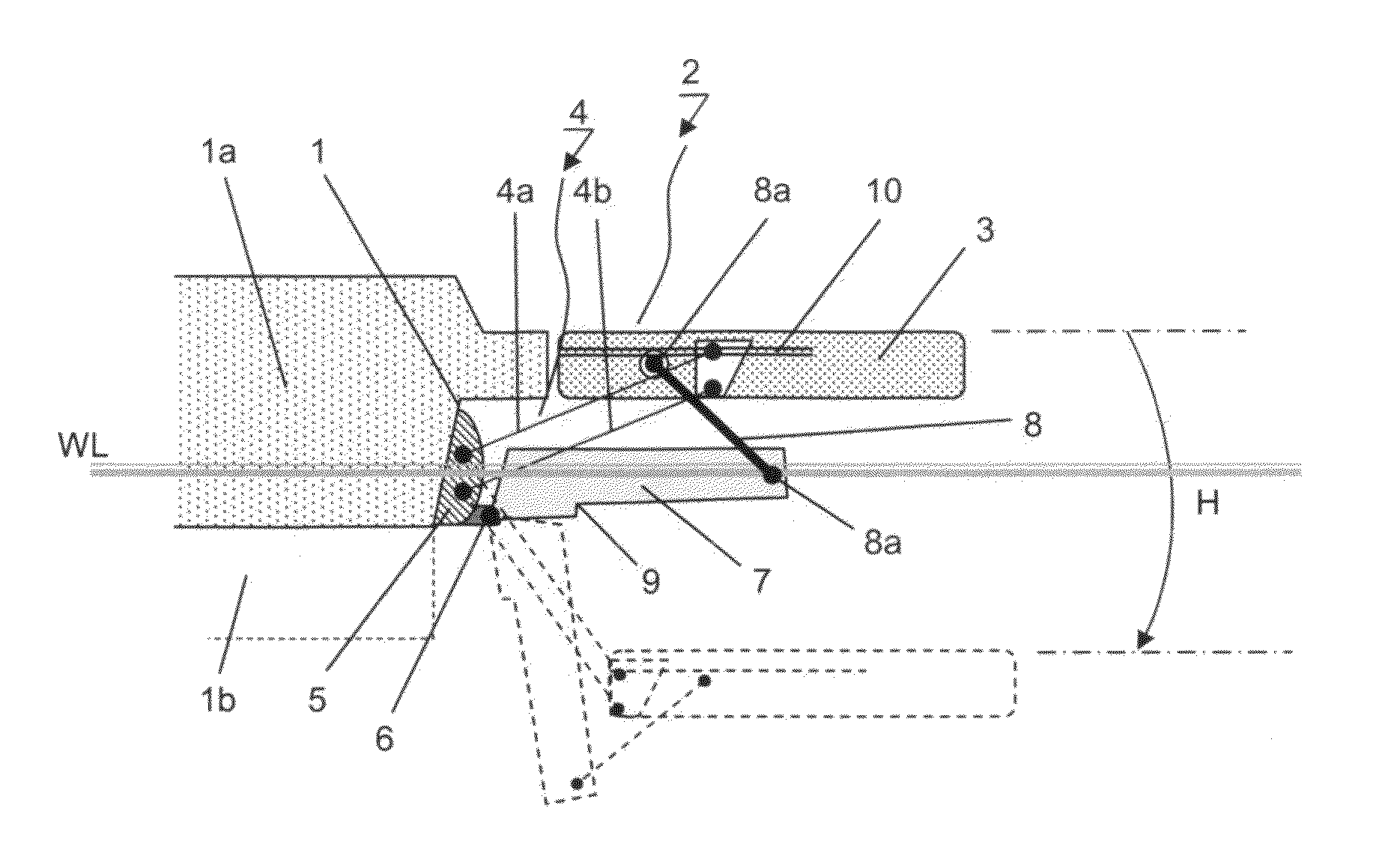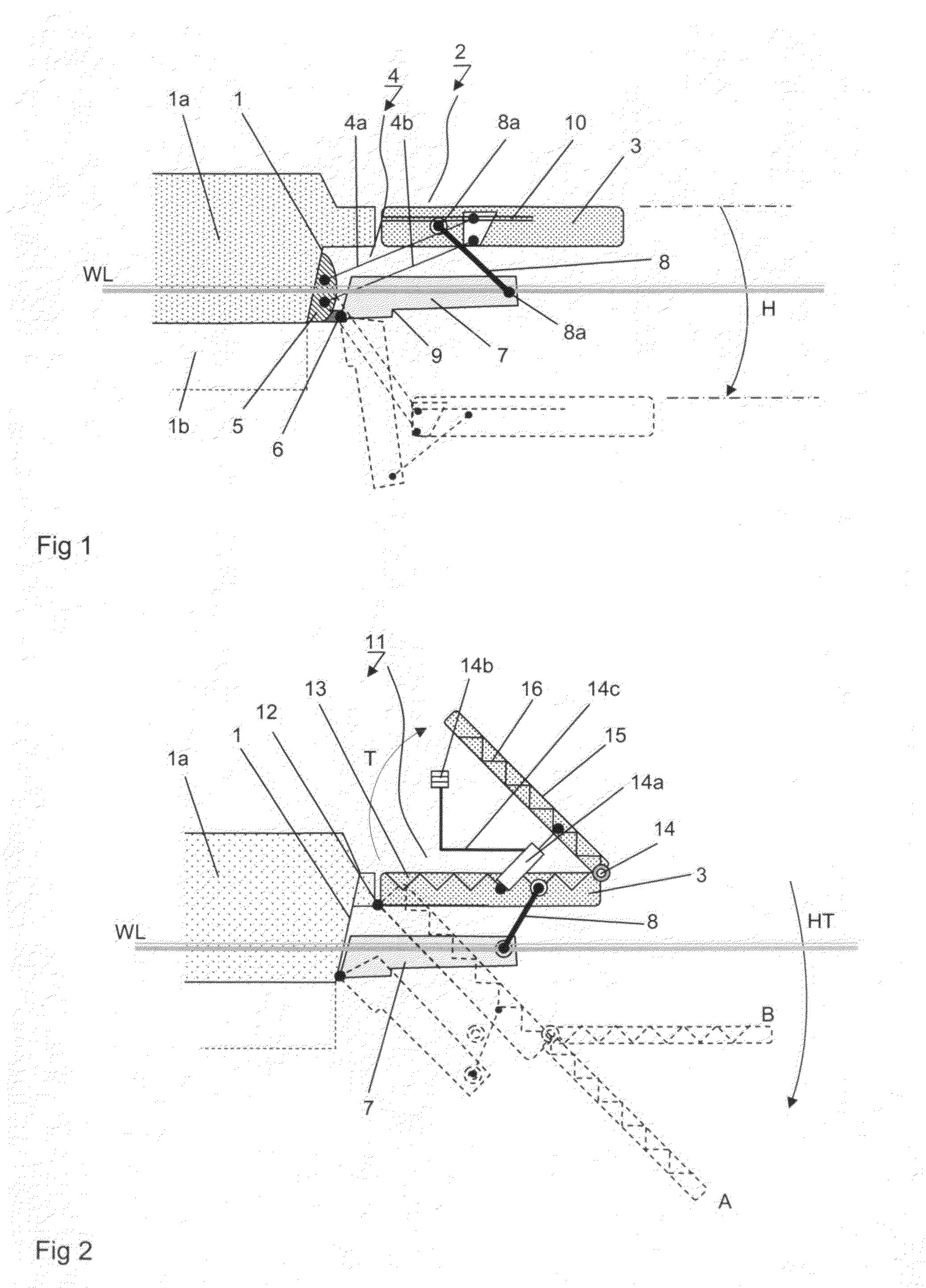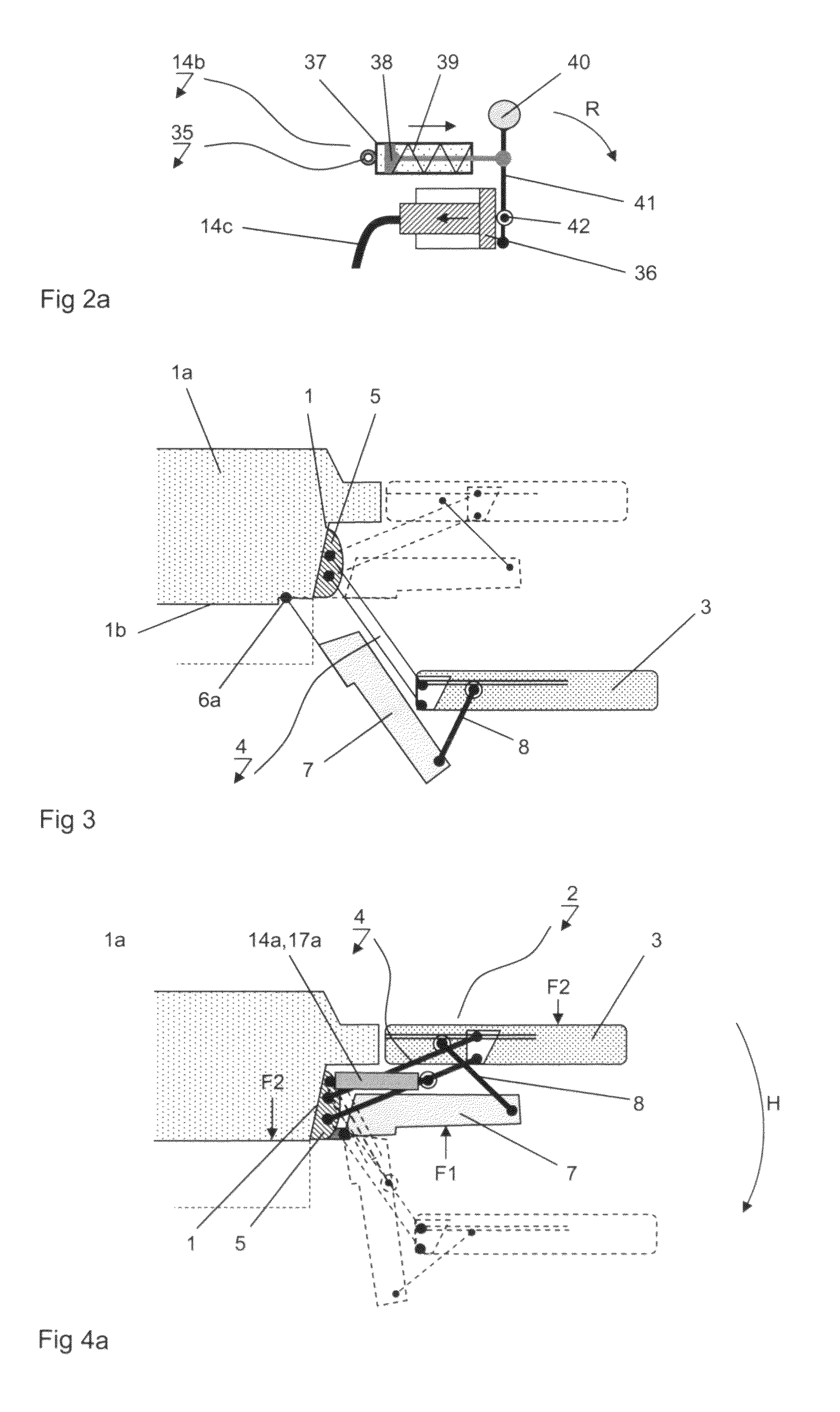Folding hull element
a technology of hull elements and hull components, applied in the field of hull elements, can solve the problems of unfavorable weight distribution of the whole watercraft, and achieve the effect of improving the loading in the stern area
- Summary
- Abstract
- Description
- Claims
- Application Information
AI Technical Summary
Benefits of technology
Problems solved by technology
Method used
Image
Examples
Embodiment Construction
[0031]FIG. 1 Shows a schematic sideview of a stern 1 of a watercraft 1a with a watercraft lift 2 fixed onto it, which consists of a platform 3 on which a tilt arm set 4, consisting of tilt arms 4a,4b is mounted in the form of a parallelogram, and which is fixed and hinged to a console 5 and the console 5 is mounted on the stern 1. Details regarding bearings and such like, as well as the cylinder for lifting and lowering the platform, have been masked out. The hull bottom 1b with the deadrise is only indicated here and the deadrise of the hull element 7 is masked out. The hinged hull element 7 is fixed on the stern 1 by means of a hinge 6. The watercraft lift 2 and the hull element 7 are connected and hinged to each other with a connector 8 by means of the bearing 8a. [0032]The hinged hull element 7 shows a lifting body with a static lift as long as the watercraft 1a rests in the water and has a dynamic lift when the watercraft 1a is planing, respectively up to a certain speed. The h...
PUM
 Login to View More
Login to View More Abstract
Description
Claims
Application Information
 Login to View More
Login to View More - R&D
- Intellectual Property
- Life Sciences
- Materials
- Tech Scout
- Unparalleled Data Quality
- Higher Quality Content
- 60% Fewer Hallucinations
Browse by: Latest US Patents, China's latest patents, Technical Efficacy Thesaurus, Application Domain, Technology Topic, Popular Technical Reports.
© 2025 PatSnap. All rights reserved.Legal|Privacy policy|Modern Slavery Act Transparency Statement|Sitemap|About US| Contact US: help@patsnap.com



